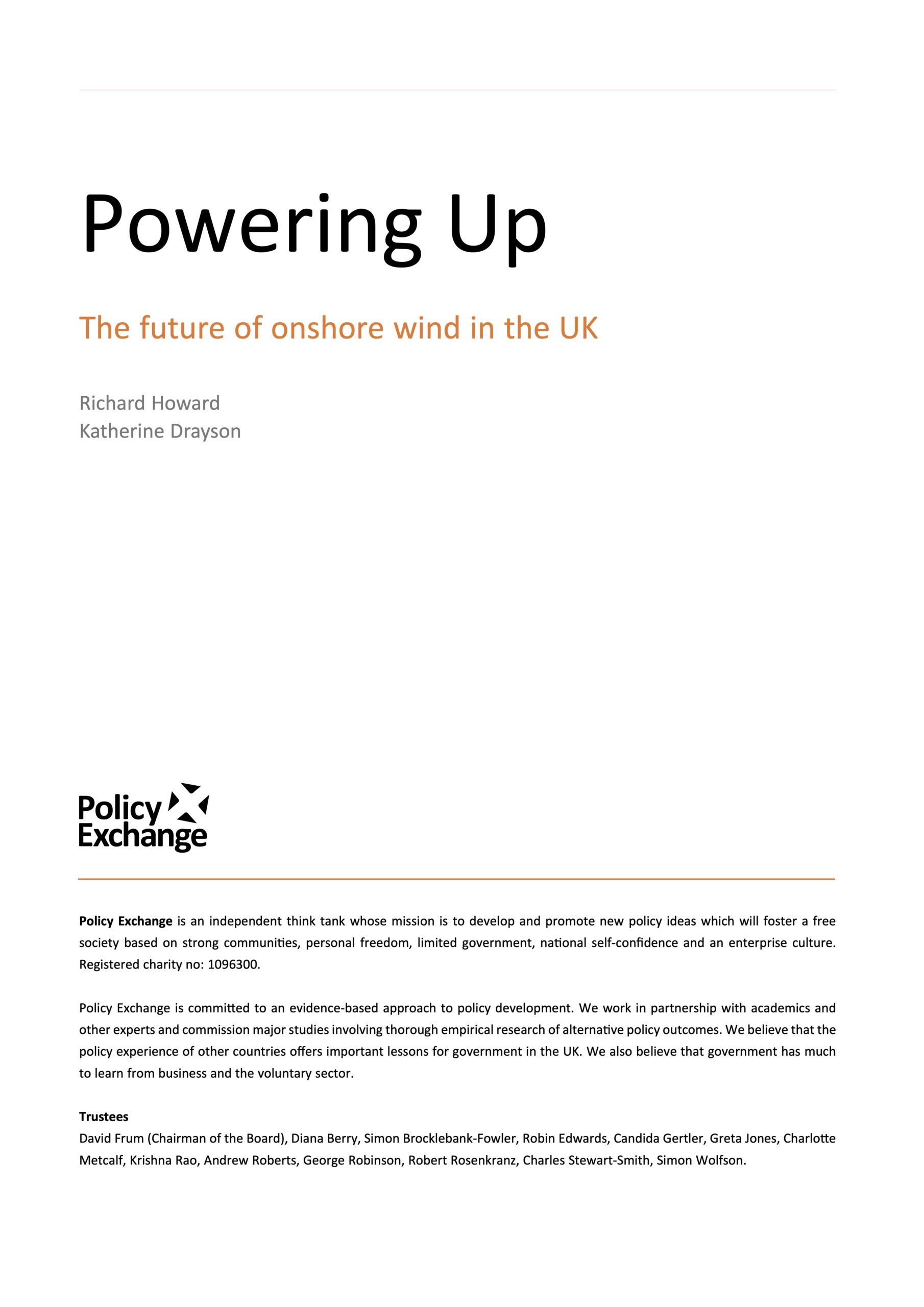
Powering Up: The future of onshore wind in the UK
Onshore wind is the most cost effective and scaleable low carbon technology in the UK and should be allowed to continue, albeit with subsidies phased out, if the government wants to decarbonise at least cost to the consumer.
Powering Up: The future of onshore wind in the UK estimates that the cost of onshore wind could continue to fall from £85/MWh to approximately £60/MWh by 2020 as a result of using larger turbines in high wind speed areas of the country – predominantly Scotland. This would put the cost of onshore wind in the same league as a new gas plant and significantly cheaper than offshore wind, biomass, or even nuclear.
The paper says that in order to achieve these cost reductions, new onshore wind projects should be allowed to continue to take part in the government’s Contract for Difference (CfD) auction mechanism. It highlights that, in reality, this would signal an end to onshore wind development in England. In the first CfD round, 10 of the 15 projects were located in Scotland, accounting for 73% of the total capacity, with the remainder in Wales (24%), and England (3%). Support for onshore wind is significantly higher in Scotland (71% of the public are in support) than in England (support drops to 61%).
The paper includes a number of proposals including:
- Fast-tracking the Energy Bill to minimise uncertainty for onshore wind developers
- Allowing new and repowered onshore wind projects to participate in renewables CfD auctions
- Capping and reducing the amount paid to new and repowered onshore wind projects, such that they effectively become ‘subsidy free’ by 2020
- Increasing community ownership and community benefits from onshore wind


